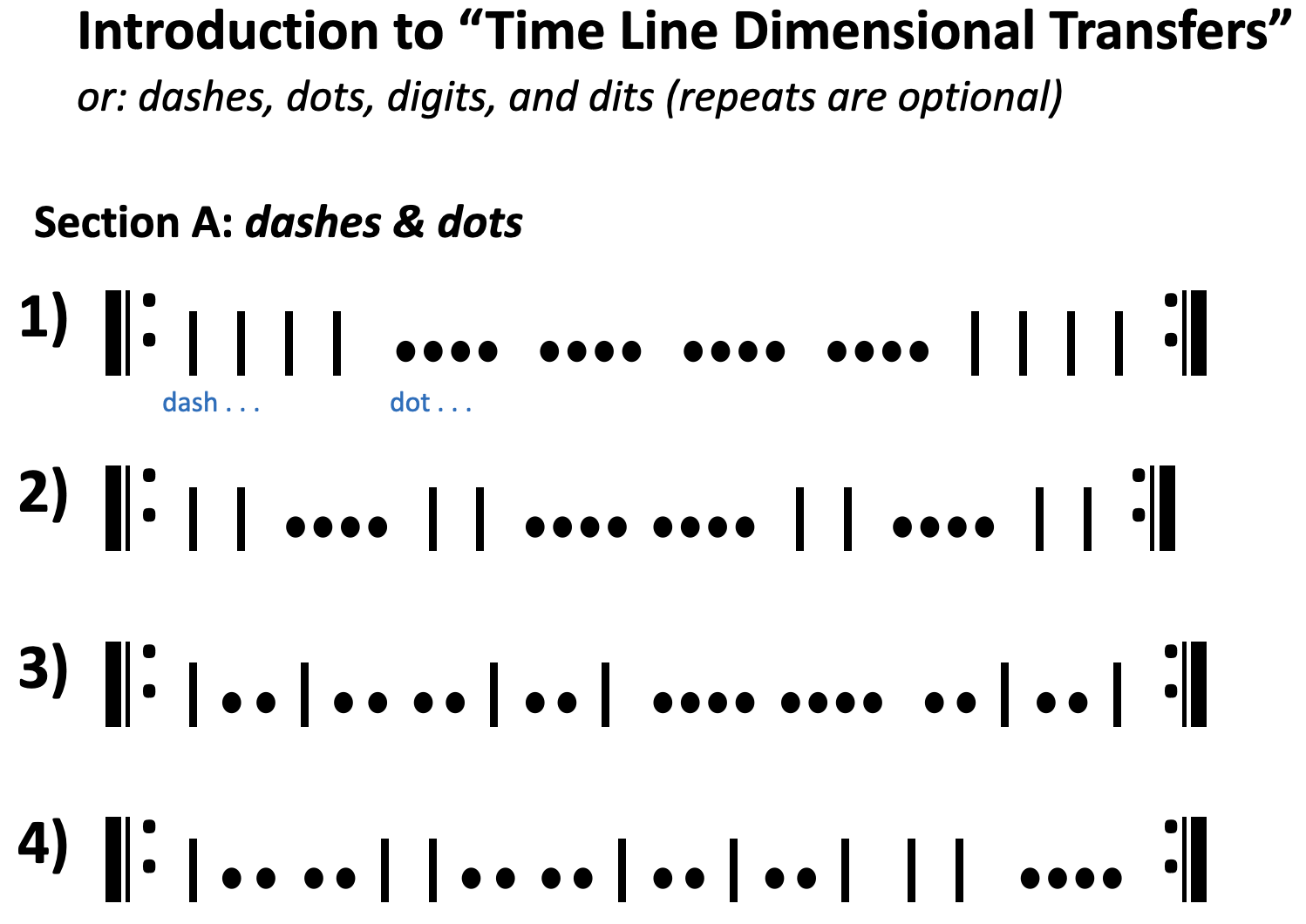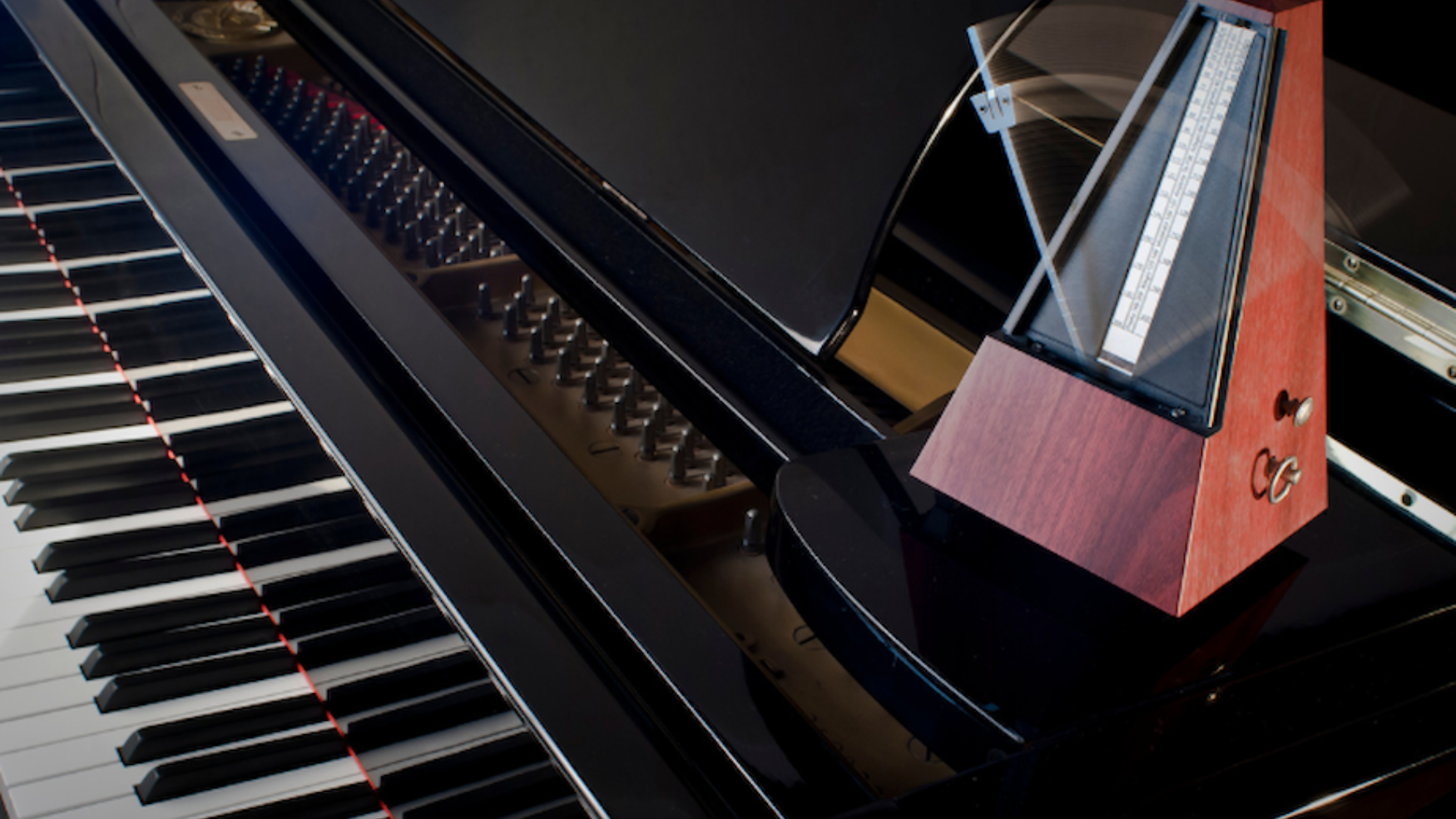Here is an idea that is a little different. Except for upcoming Spring Concerts, most middle school performances are done, and directors are looking toward helping prepare their 6th graders (beginners) for their upcoming 7th-grade year. This is where they become the younger members of many 7th & 8th- grade combined Festival Bands, so there is a lot they need to accomplish by mid-next year. What about the concept of teaching students how to perform future and more advanced rhythms before (or at the same time) teaching them how to read them? That is the idea behind Rhythm Games.
Rhythm Games is designed to present rhythms and counting in more of a “game-like” format, with the music teacher taking on the role of a game show host. I call the concept “Time Line Dimensional Transferring,” which features a series of pictographs where each symbol represents a specific length of note as it relates to 8th and 16th-note subdivisions in both duple and triple-metered music. One of the main purposes is to pre-teach the skill of subdividing as students combine these sounds and practice transferring the different note lengths from one timeline to another. Another aspect of the game is that students learn how to decode future potential rhythm patterns (in real-time) as they relate to the different note length velocities as represented in each of the four timeline subdivisions available to us.
The director presents the “Time Line Dimensional Transfer” material asking the students to solve puzzles or figure out the sound that is represented by the pictographs presented in each exercise line. One might also present the content in a teacher vs. student way, asking the class or individual students to verbally decode the presented symbol pattern to win each round of the game. The role of game show host comes into play when the teacher asks open-ended and probing questions to help lead their students to the correct answers. You might ask, “What is different in exercise #3 as compared to #2?” Once the change from one line to the next is discovered, you might ask for volunteers to offer their suggestions on how they might interpret the newly discovered symbol combinations. At times I like asking students to “read my mind”, or try to predict what the new symbol combinations might mean or sound like.
That age group seems to thrive on the challenge of “you figure it out!” and higher-level thinking-type questions. The “T.L.D.T.” sheets are divided into sections, each one containing four exercise lines. Each section cumulatively adds one new concept or slight symbol variation hidden somewhere in the line. The four lines combined take under one minute to perform and take two to three minutes to ask probing questions or help lead them; the total time to play each session is only about four minutes in length. Trust me, your kids are smart, and that is typically all the time they will need. Even playing the game every other day, you could easily finish up the two-page mini-curriculum by the end of this school year.
In Section A, what you see is what you say. The “dashes” are said at the speed of eighth notes, with “dots” being 16th notes. The repeats can be used if you feel they are needed, but I normally tell students not to use them. I also insist on students tapping their foot (along with a metronome) as they do these exercises, and I am a HUGE believer in accompanying the foot by mimicking the “down-up” motion with one of their thumbs. I insist that the thumb be placed right in front of their face (about six to ten inches in front of their brain) so they can still read the music. This adds a visual aspect along with the tactile feeling of their foot, and two-sense references are usually better than one. Sometimes students have issues with foot tapping and yet do just fine following the thumb. In exercise #3, I sneak in a “dash” and “dots” combined in a single count, and surprisingly, most of the 6th graders figure it out without any help. In Section B, the challenge is adding the down arrow for quarter notes. The students simply say the word “down,” but the trick is to get them to hold out the word until the next downbeat occurs before saying the next symbol in the exercise. It usually takes the student “gamers” several lines to get used to the idea.
What you are also doing with “T.L.D.T.” is opening up opportunities to differentiate different student learning styles when teaching your students to count rhythms. The added processing of the correct number sequence and the complexity of using division as your ONLY performance option is quite limiting. “T.L.D.T.” offers the alternative of a simplified cumulative (addition) approach as an option for your students if needed.








